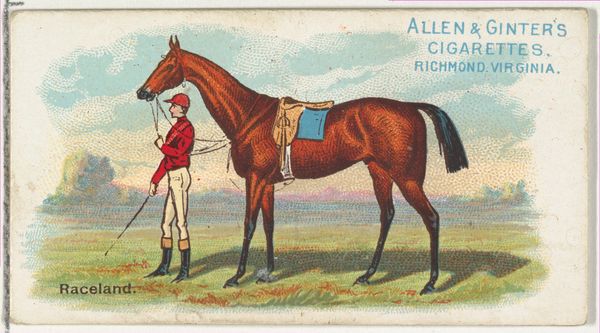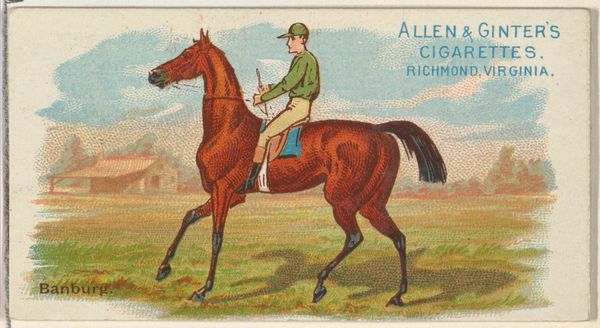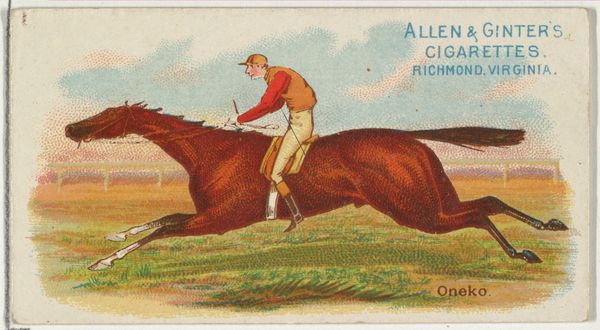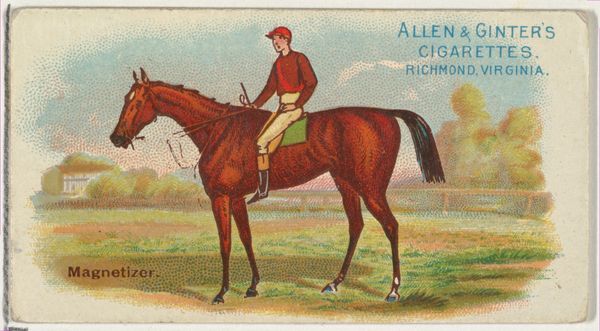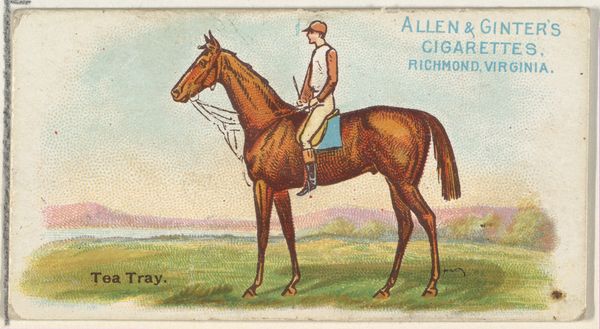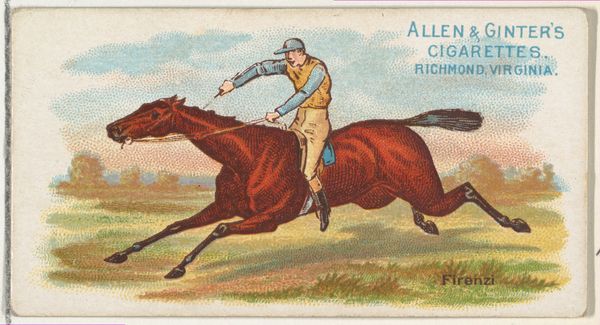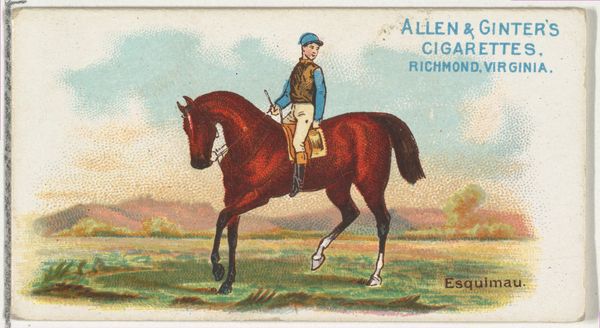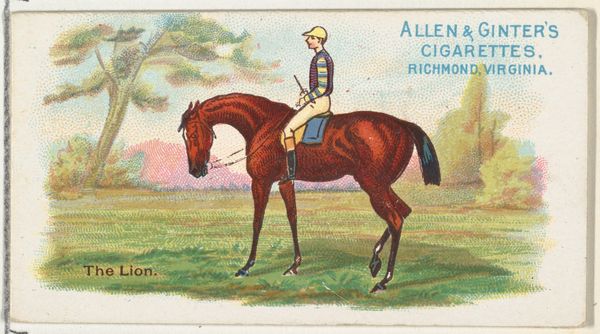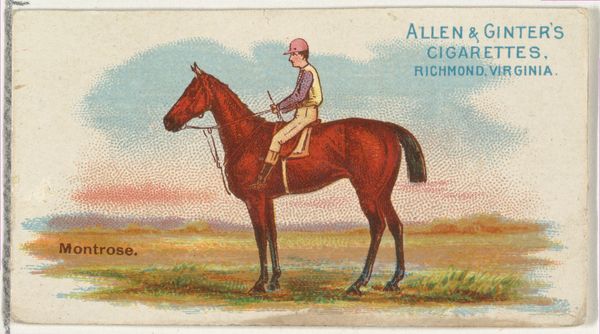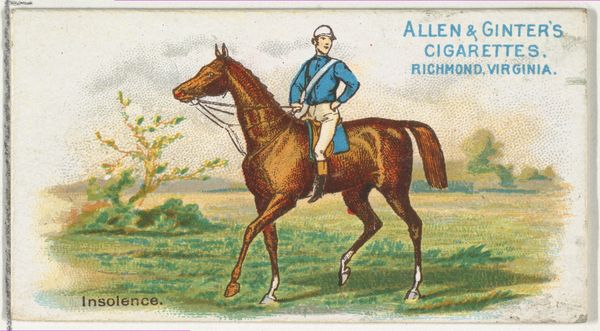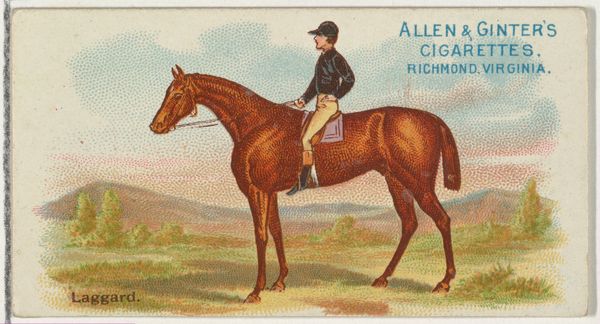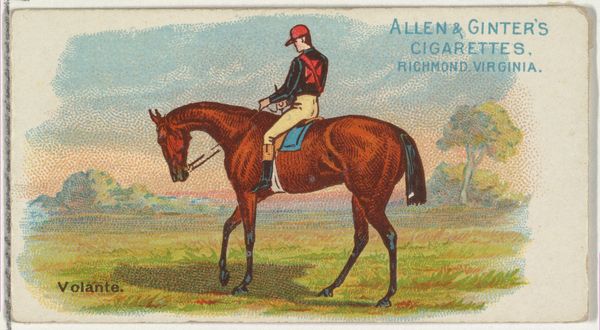
Linden, from The World's Racers series (N32) for Allen & Ginter Cigarettes 1888
0:00
0:00
# print
#
coloured pencil
#
horse
#
men
Dimensions: Sheet: 1 1/2 x 2 3/4 in. (3.8 x 7 cm)
Copyright: Public Domain
Editor: This is “Linden, from The World’s Racers series (N32) for Allen & Ginter Cigarettes,” created in 1888. It's a coloured pencil drawing and print. What strikes me immediately is how this little image was made to sell cigarettes. What do you see here? Curator: This unassuming print is fascinating precisely because it was born from the logic of mass production and consumption. Cigarette cards, like this one, reveal the democratization of art through industry, where art is not confined to the elite, but becomes an everyday commodity circulated among the masses. Editor: So it's not just art, it's advertising too. Curator: Exactly. The artist, whose labor is often unacknowledged in these mass-produced items, is creating an image destined for a fleeting existence, tucked inside a cigarette pack and quickly discarded, until some collector redeems it. Think about the cost of coloured pencil and print at this time, and how that cost reflects class distinctions among people who smoked cigarettes. It's also important to notice “Allen & Ginter’s Cigarettes, Richmond, Virginia," since this detail firmly places its production within a specific regional context. What does that context tell us? Editor: Right. Virginia's economy in 1888 was very different than, say, New York's. And, beyond selling cigarettes, this is selling a vision of horse racing. Is there a specific symbolism implied about "Linden," the horse itself? Curator: Yes, it links to the wider obsession with portraying leisure and aspirational lifestyles which helped brands sell to the upwardly mobile middle classes. The cigarette card transformed horse racing, historically a high-society spectacle, into a form of mass entertainment. By owning the card, the consumer 'owns' Linden in a sense, which underscores the art’s intersection with class and consumer culture. Editor: This changes how I see these types of images. Thanks for sharing your expertise! Curator: The pleasure is all mine. It’s amazing how a humble cigarette card can illuminate such complex intersections of art, labor, and commodity culture.
Comments
No comments
Be the first to comment and join the conversation on the ultimate creative platform.
